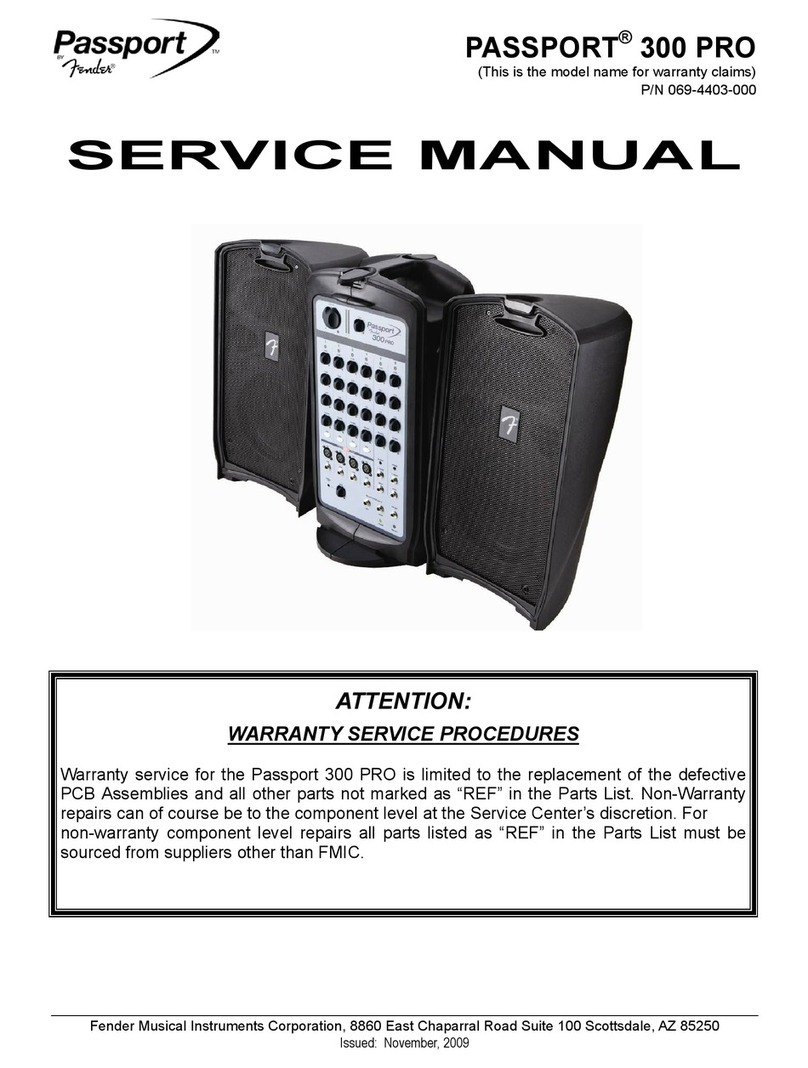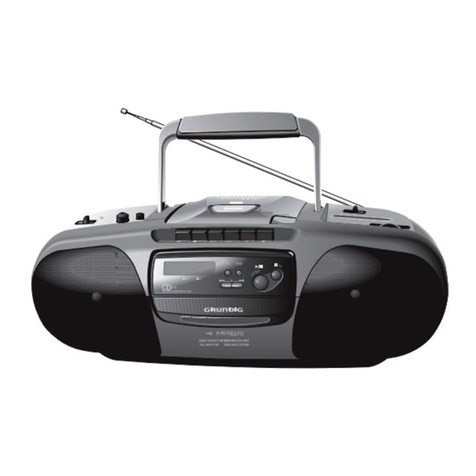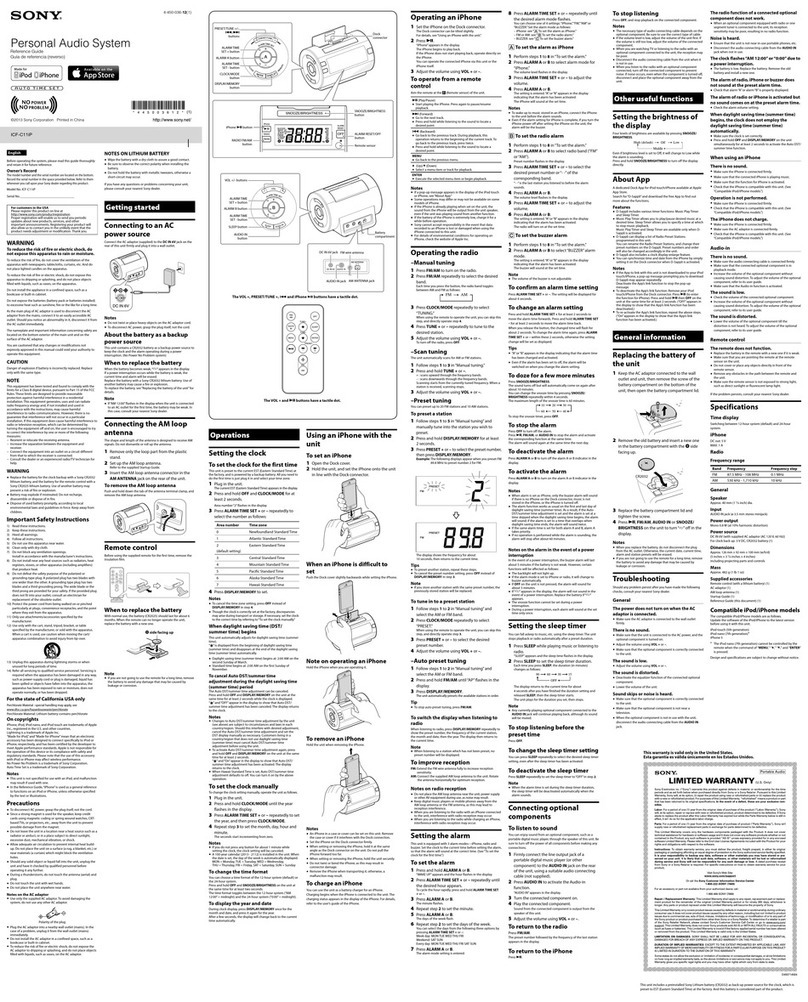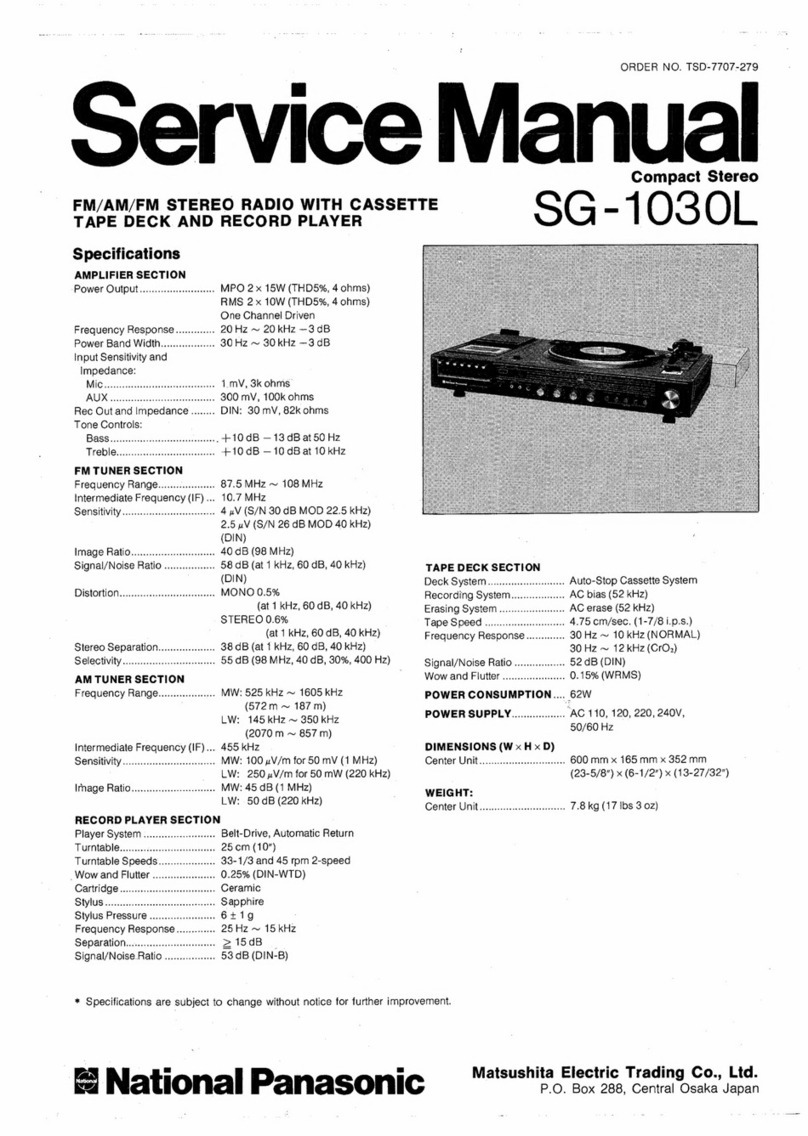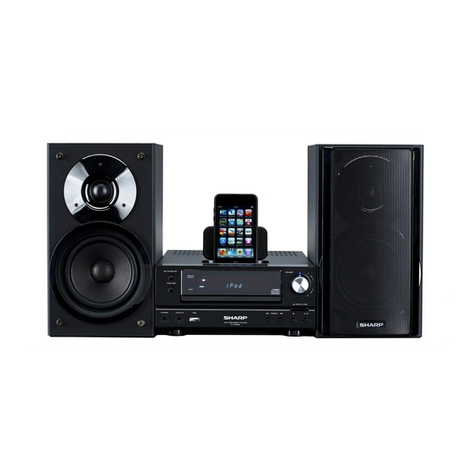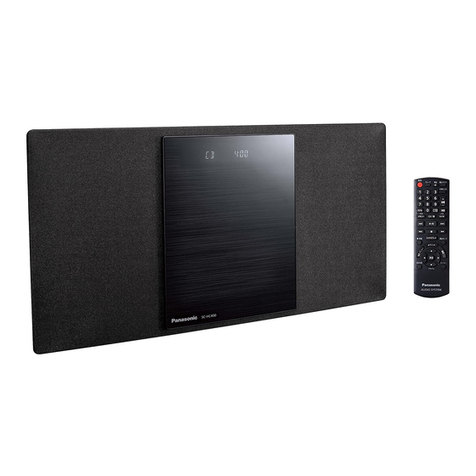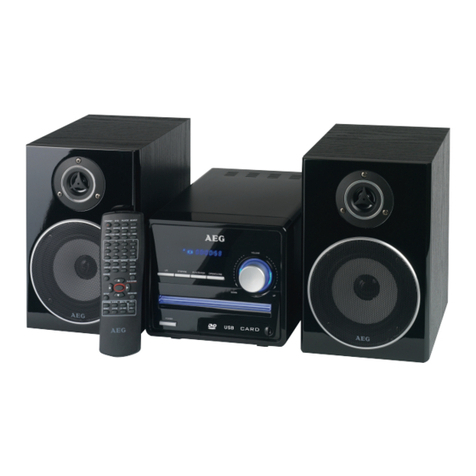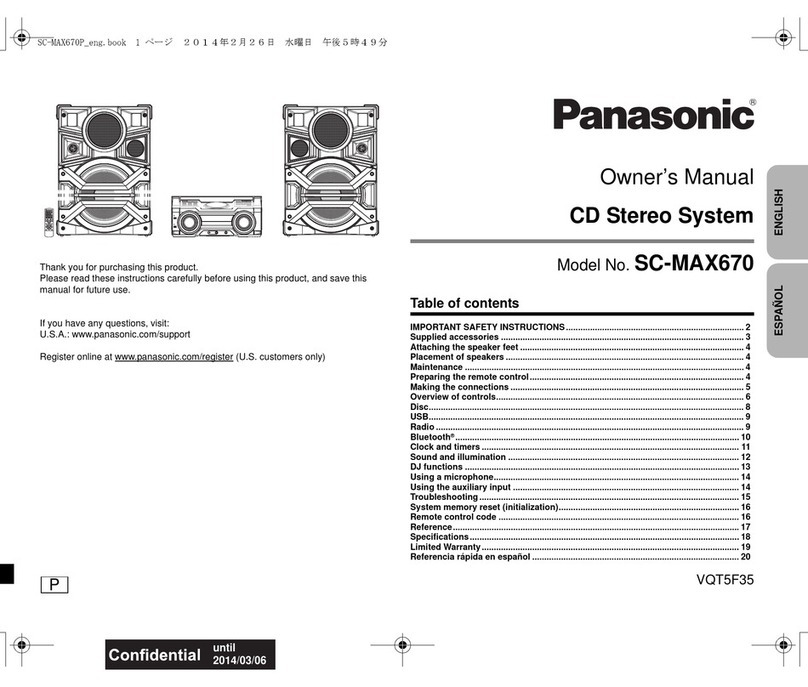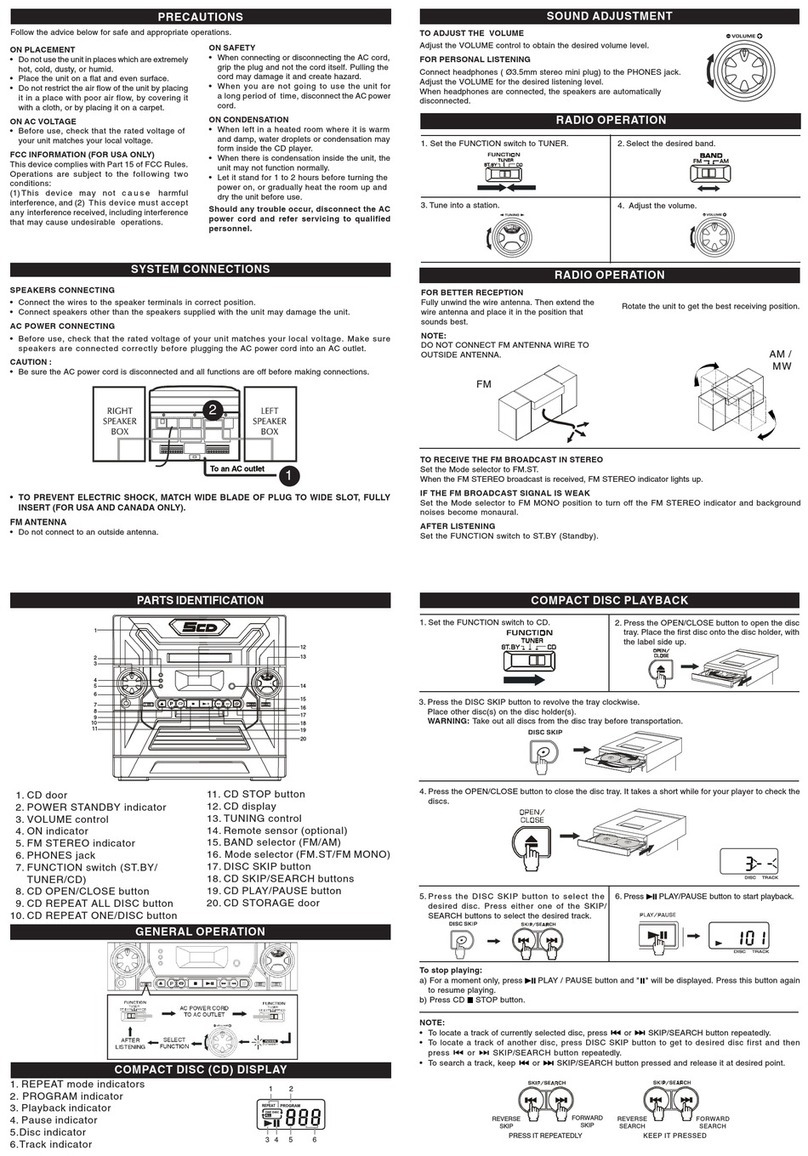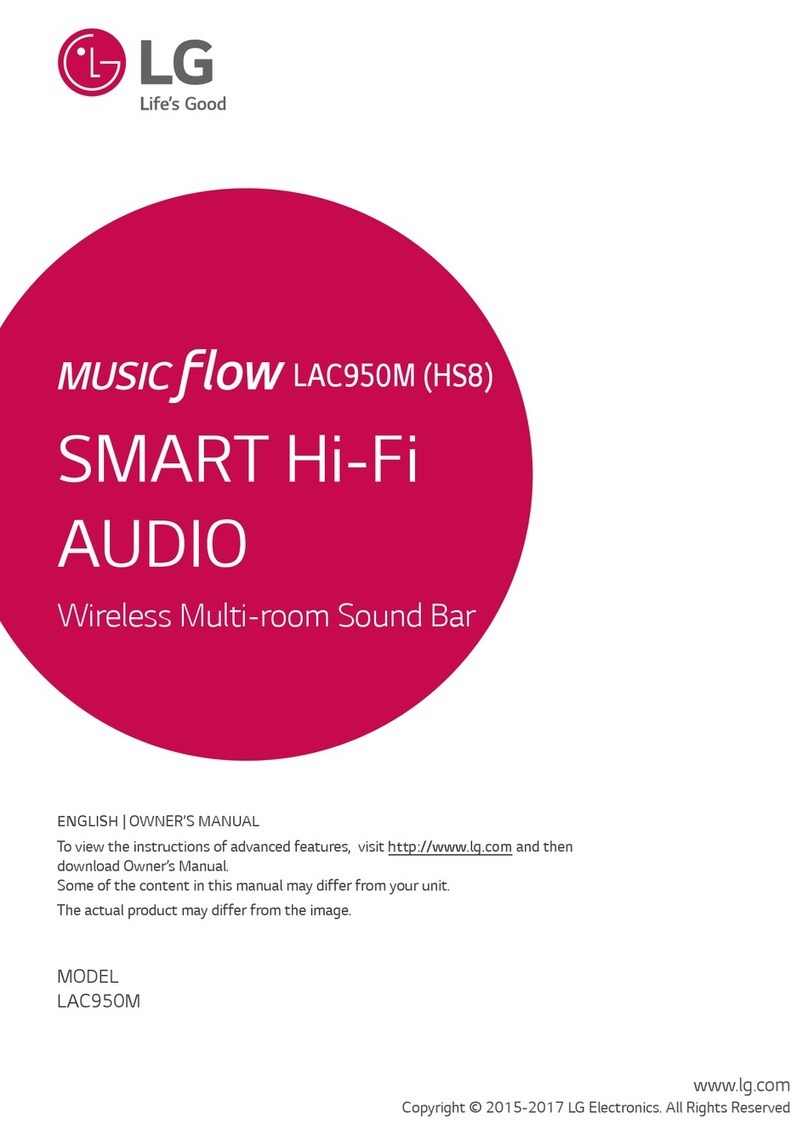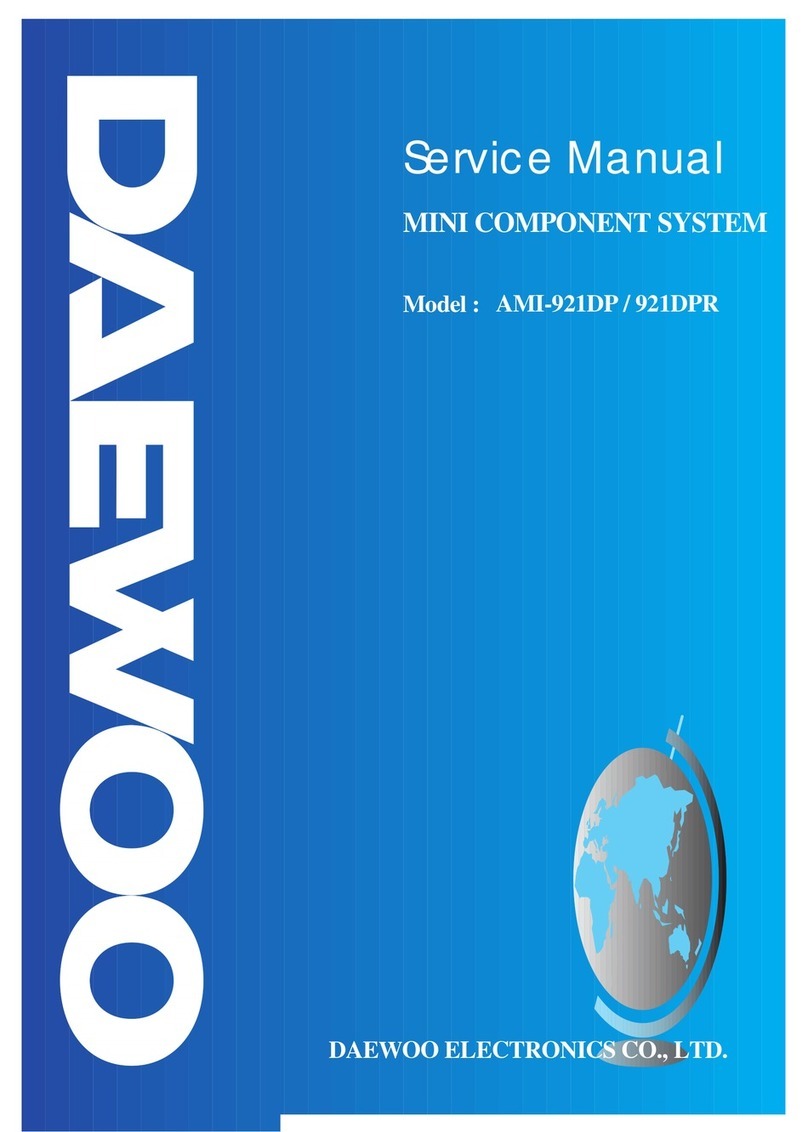Harris STX-1B User manual

www.SteamPoweredRadio.Com
• m
HARRIS
STX-1B
AM
Stereo
Exciter
• Ge
nerate
s t
he
C-
QUAM
'''
AM
St
ereo
signal
•
Built
-in
audio
peak
limit
er
to
ma
int
ain legal stereo
modulati
on levels
•
Separation
c
orrector
optimize
s performance
into
th
e
antenna
s
ystem
•
Separ
a
te
s s
ele
c
table
da
y and
night
system
optimi
z
ation
controls for
maximum
performanceinto
day
or
night
antenna
systems
•
Standard
left
/right
or
matrix
audio
input
s
• E
as
y
tran
s
mitter
interfaceincluded
C-O
UAM
•
is
a r
eg
ist
ered
lrademar
k
of
Motorola
,
Inc
.
•
The
Harris
STX-1 B
exciter
gene
r
ates
the
C-OUAM'"
AM
stereo
si
gnal
to
convert
AM
transmitters
to
stereo service.
The Harris
STX-18
includes
several
features
wh
ich
op-
timize
stereo
performance.
TRANSFORMERLESS
AUDIO
INPUT
AND
PEAK LIMITER
The
STX-1B
incorporates
a
solid-s
t
ate
tr
ansfor
mer
less
input
stage
providing
excelle
nt
tr
ansient response
fo
r faith-
ful
transmission
of
today's
dy
n
amic
progr
am
mater
ial. A
s
tereo
audio
pea
k
limite
r
ma
i
ntains
Left, Right, (L+
R),
and
(L
-
R)
modulation
leve
ls
within
legal
lim
its.
This
built
-
in
limiter
inc
l
udes
aut
omatic
125% as
ym
met
ri
-
cal
switching
to
assure
maximum
modula
t
ion
levels. F
or
statio
n
operations
with
external
audio
processing, the en-
tir
e
limiter
may
be
bypassed.
PATENTEDSEPARATION CORRECTOR
Older
AM
transmi
tt
ers
an
d
nar
row ba
nd
sy
stems
ca
n
de
-
grade
stereo
separ
ation.
T
he
Har
ris STX-
18
AM Stereo
Exciter
is
designed
w
ith
a
patente
d cor
rectio
n circuit to
opt
imize
separation.
ADDITIONAL
OPERATOR BENEFITS
A
day
and
night
opera
t
ional
mode is
provided
for
stat
ions
switching
power
an
d/o
r
anten
na patterns. Independ
ent
adjustments
are
auto
m
atica
ll
y selected
for
t
he
two
mo
des.
Day/night
and
stereo/mo
no
mo
d
es
are selected
locally
or
via
remote
con
t
rol
t
ermi
n
als
.
A
front
panel
peak
reading
modulation
multimeter
accu-
rately
monitors
several
selectable
signals
fo
r easy
se
t
up
and
ope
r
ation.
These
sig
n
als
also
appear
on
a
front
panel
BNC
test
jack. A
convenient
multimeter
al
lows
quic
k A
C,
DC
and
RF
l
evel
checks.

www.SteamPoweredRadio.Com
STX-1B
AM
STEREO EXCITER
BLOCK
DIAGRAM
LIR
INPUTS
AU
OIO
INP
Uf
Pf'AK
LI
M
1TE
A'
SEPARATION
CORI\ECTOR
METER
I
NG
AND
CO
N'f~
Ol
IF
STE:RE:O
SIO~Al
QE
NfRAT
O R
A
UD
IO
D EL
AY
l',i
OUTPUT
Rf
DEL
AV
t,.
OVT
PUT
+
POWl!:R
SUPPLV
UP
CO
NV
f.Al
ER
&
FREQUENCY
SYNTHESl7ER
TO
TX
AUDIO
At C
MMNS
1171230V
•
ST
X-
18
SPECIFICATIONS
FREQUENCYRANGE:
Synthes
i
zed
operation
from
535k
Hz
to 1710kHzin 1 kHz i
ncrements
.
FREQUENCYSTABILITY:
.±.
10
Hz
or
less
over
operating
temperature
range
.
RF
OUTPUT
:
Adjustable
from
Oto 4.0w
atts
into
50
ohms
(0
to
14
vo
l
ts
RMS).
RF LOAD IMPEDANCE:
50
ohms
at
r
ated
po
w
er
(BNC
outp
ut
jack).
OPERATING TEMPERATURERANGE:
0°C
to
50
°C
(usable
from
-20°c
to
50°Cl.
OPERATING ALTITUOERANGE:
Up
to
13,000
feet
(4,
000
meters).
AC POWER REQUIREMENTS:
100
to
130
volts
or
200
to
260
vo
l
ts,
50
or
60 Hz
AC
(1
25watts
maximum)
.
AUDIO
INPUT
IMPEDANCE:
Left
and
Right
channels
600
ohms
resistive, balanced, transformerless.
AUDIO
INPUT
LE
VELS:
+
10
dBm(
± 1
dB)
for
100%
envelope
modu
lat
ion
at 4
00
Hz
(Left
and
Rig
ht
channels)
.
Peak
limi
t
er
ga
in
begins
at
+-
0
dBm
input.
Switchable
to
+
10
dBmor
-
10dBm
.
AUDIO
DRIVE
TO
TRANSMITTER:
Adjustable
to
+ 16
dBm
into
600
ohm
balanced
input.
MODULATION
CAPABILITY:
LEFT OR
RIGHT
CHANNEL:
±
80
%
LEFT+ RIGHT (L + R
):
+135%/
-100%
LEFT-RIGHT (L - R
):
±
10
0%
The
following
audio
specifications
represent
typical
performance
th
at
ca11
be
expected
from
the
STX
-
TB
exciter
and
a
modern
AM
transmitter
meas-
ured
by
a C-QUAM
modulation
monitor
. Ac
tua
l
system
performance
wt/I
vary
due
to
transmitter
and
antenna
system
performance.
SYSTEM
FREQUENCY RESPONSE:
t-
0, 3
dB
,
50
Hz to 12.5 kHz
under
modulation
co
nditi
ons
of
L •R,
L,
R•
25
%,
50%
and
75
%
modu
l
atio
n,
also
Lt R
to
95%. •
The
response
of
the
system
is
ltmited
to
the
adjus
t
ment
of
the
1n
tern
al
le -
and
r,ght
channel
input
filters
wl/l
ch
may
be
adjusted
IO
optimize
overall
tr
a
nsm
i
tter
performance
.
SYSTEM
HARMONI
C DISTORTION:
L+ R (
Mono
l:
Less
than
1% THO, 50 Hz
to
12.5kHz
at
25
%, 50%, 75%
and
95%
enve
l
ope
modu
l
ation
measured
on
;;in envelopedetector.
Left
Or
Righ
t
Only
(
Stereo)
: Less
than
3.0%
THO
,
50
Hz
to
7500
Hz.
25%,
50
%,
75
% en
velope
modu
l
ation
.
NOTE
: The
above
harmonic
d1stortton
measurements
made
within
a
20
Hz
to
20
kHz
bandwidth
.
SYSTEM
STEREO SEPARATION:
30
dB
or
better,
left
or
right
channel
modulation
at
25
%, 50%, 75%
modula
•
t
ion,
from
50
Hz
to
7500
Hz
.
SYSTEM
CROSSTALK:
30
dB
or
better
(main
i
nto
subchannel)
or
(s
ubchann
el
i
nto
main)
50 Hz
to
7500
Hz.
NOISE
:
65
dB
below
95%
mod
u
lation
of
L+ R
main
channel.
50
dB
below
75%
modulation
left
only
or
righ
t
only
.
REAR
CHASSIS
CONNECTORS:
Barrier
strip
and
BNC
jac
ks.
S
IZE
:
10½
"H X 19'W X 13.
38'
'
0.
WEIGHT
:
30
lbs
.
HARRIS
MAINTAINS
A CONTINUOUSPROGRAM
OF
PRODUCTIMPROVEMENT,
ANO
THEREFORERESERVESTHERIGHT
TO
CHANGESPECIFICATIONS WITHOUTNOTICE.
ORDERING INFORMATION
STX
-1B
AM
Stereo
Exciter
.....
. .
..................
.
...........
•
.................
,
....
..•.
.......................
994-8730-008
HARRIS CORPORATION BROADCASTTRANSMISSION DIVISION
P.
0.
BOX
4290, QUINCY, ILLINOIS 62305-4290 U.S.A. 217/222-8200
CP-2M-385 ©
Harris
Corporation
1985
ADV
.
667
PTO. IN U.S.A.

www.SteamPoweredRadio.Com
Equipme
nt
:
\\
s S:
ERVIC
.E BULLETIN
MAIN
T
ENANCE
AND
MODIF
I
CATION
,
DATA
•
.,.
r\.•
Broadcast Group
'
..
.:
i."
' Bulletin.
No
.
AM
-205-MJL
STX-IA
AM
Stereo
Exciter
Da
te
July
19~5
;
..
-i
·:
.
Purpose:
Convert
exciter
from
STX-IA
to
STX-lB C-Quam
AM
Stereo
system.
--~
'::..
,,&
.
.,
-
~ackground
: .,.
(.;
:
•./
-
Harris
Corporation
and
Motorola
;'
::
;l
nc.
·
announced
a
licensing
agree
-
ment
whereby
Harris
Corporation
.'.s .
Broadcast
·
Transmission
Division
will
manufac
t
ure
and
market
AM:
s .t e
reo
excite
r s
and
monitors
using
Motorola's
C-QUAMR
AM
Stereo
Sy
s
tem
on
a
non
-
excltJ.sive
··
basis.
Tools
and
T~~t
Equipment
Required
( .- '
Small
hand
too
l
s,
low
wattage
soldering
i
ron,
audi~
_
generator,
audio
.
distortion
an
alyzer,
scope
and
a
•.
G:-
Quam:.
s.t~reo
·-demodul
at
or .
' l •
:-
• r • •
.to
,
Time
Required:
Approximately
four
hours
for
the
conversion
and
·
exciter
realignment
.
A
full
proof
of
performance
is
·
req~i
r
ed
after
the
·
conversion
.
Procedure:
Audio
Input
Board
-
Part
Number
992
-
6077
-:
001
.,:-:
..
..
. .,...
NOTE:
If
the
unit
is
cu
f
rently
bei-ng
operated
in
.
··
conjunction
with
a mat-rix:ed
L+R
·,
--
·t.:..il ··aud"io
-·
pro
- · ·_.
cessor,
t
his
part
of
·
th'
e:
,!ltOcf
j.
fi~atio~
.
~
~
-
a~
.r ~~~Y.. ·
done.
The
modificatiot\
consists
of
removing
· ·t
he
·
All
Pass
Filter
from
'
the
.
L+ICchannel
and
the
200Hz
high
pass
filter
from
tA~<L
.;;
~
.,
chann~l.
····: ·
·•·
·
:•,
CAUTION:
Always
turn
off
the
exc
.i
t~r
·'
before
·renio·v:t
ng
or
r~~~ac~ng
any
pr
i
nted
circuit
boclrd.
-_ ··.
~
V
-
✓
/ ' V
,--.
✓
-
1)
Remove
Rl8,
R24, R48,
C9,
·
C21:
'
and
us·_
,,.....
.
These
co
m
ponenta
w
il
l .
not
be
re
i
nstalled.
2)
Remove
dip
resistor
Rl7,
bend
pins
1
and
4 away
from
the
body
and
replace
Rl7
in
the
socke
t .
HARRIS
CO
R
PO
RA
TI
ON P.O. Box 4290,
Quincy
,
Illino
is 62305 217/222-8200

www.SteamPoweredRadio.Com
..
..
•
\
AM
-205-
MJL
S':l'X
- 1
Page 2
Audio
Input
Board -
Continued:
3)
Remove
U2, bend
pin
7 away from
the
body and
replace
U2
the
socket.
4)
Solder
jumper
wire
from
U2-pin
14
to
the
circuit
formerly
connected
to
U2-pin
7
using
PC
pads
for
C9
(removed) and
R24
(removed).
(Bottom
hole
of
C9
to
bottom
hole
of
R24.)
Refer
to
Figure
A and
Figure
8-
1.
5)
Solder
jumper
wire
f r
om
U4-pin
14
to
U5
socket
pin
1
using
PC
pads
for
C21
(removed) and
R48
(removed). (Bottom
hole
of
C21
to
bot
t
om
hole
of
R48.)
Refer
to
Figure
A and
Figure
8- 1.
Quadrature
Board -
Part
Number 992-6078~004
1)
2)
3)
4)
Remove
the
following
components:
U
7,
Ull,
Ul2,
U
l3
, U28, t
JO
, U
31,
U32, U33, U34, R21, R73,
R84, R87,
R92
, C24,
P2
(at
J2),
P3
(at
.J3)
and
P5.
These
components
will
not
be
reinstalled
•
Solder
jumper from
center
post
of
J3
to
the
center
post
of
J4.
Be
careful
not
to
·
fill
the
plug
of
J4.
The
preferred
method
is
to
wrap t
he
jumper
around
the
outside
of
the
post
and
solder
it.
Solder
jumper from
P5
-46
(edge
connec
·
tor)
feedthrough
pad
to
Cll
feedthrough
pad.
Refer
to
Figure
Band
Figure
8-2B
(two
sheets).
;
Insert
jumper
wire
from
pin
2
to
pin
15
of
XU32
socket.
5)
Insert
Pl
into
the
upper
two
posts
of
Jl.
Insert
P4
into
the
lower
two
posts
of
J4.
Refer
to
Fig
B.
This
completes
the
modification
to
the
STX-lA
Exciter
. Record
the
exciter
serial
number on
the
metal
identifier
plate
(supplied
with
this
Bulletin)
and
attach
it
to
the
back
of
the
exciter.
Retuning
the
System:
1)
Follow
the
instructions
for
"Tuning
the
Transmitter
for
Best
Stereo
Performance"
and "
Interfacing
the
STX-1
to
the
Transmitter
" found
in
Appendix A
of
the
technical
manual.

www.SteamPoweredRadio.Com
•
•
\
' AM-205-MJL
STX-1
Page
3
·--
Retuning
the
System
-
Continued:
I
NOTE:
All
references
to
applying
audio
modulation
assume
that
matrix
is
being
done
on
the
audio
input
card
in
the
STX-1
exciter.
It
is
recommended
that
for
alignment
the
audio
tones
be
applied
directly
to
the
exciter
audio
input
terminals
with
any
processing
equipment
disconnected.
If
the
audio
input
card
has
been
modified
for
a
matrixed
audio
processor,
note
that
the
left
audio
input
is
now
the
L+R
input
and
the
right
audio
input
is
the
L-R
input.
2)
Check
the
Peak
Limiter/Separation
Corrector
board
for
the
following:
a)
The
limiter
bypass
switch
(S2)
should
be
switched
to
the
IN
position.
b)
The
separation
corrector
jumpers
(JS)
and
(J6)
in
their
upper
position.
c)
The
negative
modul
a
tion
li
1~1.t
co
nt
rol
(R
21J.)
set
.
fully
counterclockwise
(CCW)
•
d)
The
recovery
rate
adjustment
(R44)
set
mid-range.
3)
Check
the
setting
of
the
carrier
adjust
control
(Rl4)
located
on
the
quadrature
generator
board.
This
should
be
done
by
monitoring
the
depth
of
modulation
of
the
IF
carrier
on
an
oscilloscope.
This
signal
can
be
viewed
from
the
IF
out
BNC
connector
at
the
back
of
the
exciter
or
the
bottom
of
12
on
the
quadrature
board
with
a
scope
probe.
i
Switch
the
stereo
exciter
to
mono
and
apply
a 1
KHz
audio
signal
to
the
left
input
of
the
exciter.
The
amplitude
of
this
signal
must
be
large
eno
ugh
(approximately
+lOdBM)
to
cause
5
to
lOdB
of
gain
reduction
as
read
on
the
exciter
multimeter
with
the
function
switch
in
the
LIM
GR
position.
NOTE:
R211
on
the
Peak
Limiter
card
must
be
fully
counter
r
clockwise
(CCW)
when
the
following
adjustment
is
made.
Modulation
of
the
IF
carrier
should
be
100
percent
displayed
on
the
oscilloscope.
Ensure
that
the
IF
is
not
being
over-
modulated
on
the
negative
peaks.
The
carrier
.
adjust
(Rl4)
can
be
adjusted
to
provide
98
to
100
percent
modulation
of
the
IF.
Remove
the
audio
signal
•

www.SteamPoweredRadio.Com
•
•
AM-205-MJL
STX-1
Page 4
\\
Retuning
the
System -
Continued:
4)
Preset
the
potentiometers
on
the
audio
output
card
as
follows:
a)
Set
the
audio
level
controls
(R54/R55)
fully
clockwise.
b)
Set
all
the
other
potentiometers
to
mid-range.
These
are
18
turn
potentiometers
with
no
mechanical
stops.
To
approximate
the
mid-range
setting,
turn
each
control
at
least
18
full
turns
in
one
direction,
then
9
turns
in
the
opposite
direction.
NOTE:
The
controls
on
the
audio
output
card
are
duplicated
to
provide
adjustments
for
day
and
night
patterns.
The
six
potentiometers
on
the
leading
edge
of
the
card
are
used
when
the
exciter
is
switched
for
the
day
pattern.
The
other
six
potentiometers
are
for
night
pattern.
Two
rotary
switches
(Sl
for
day;
S2
for
night)
are
used
5
>r
coarse
audio
delay.
5)
Apply a 1
KHz
audio
signal
to
the
left
input
of
the
exciter
•
The
amplitude
of
this
signal
should
be
large
enough
to
cause
5
to
lOdB
of
gain
reduction
as
before.
Select
the
pattern
to
be
aligned
(day
or
night).
The
exciter
should
still
be
in
mono.
Turn
the
transmitter
on
and
monitor
the
modulation
level
on a
mono
monitor
or
an
oscilloscope.
Set
the
audi~
level
control
(R54 day/R55
night)
for
100
percent
transmitter
'
modulation.
Switch
the
exciter
to
stereo
and
switch
the
pilot
OFF. (The
pilot
should
be
OFF
for
alignment
and
whenever making
performance
measurements.)
Ensure
the
stereo
monitor
is
in
the
stereo
position.
With
the
stereo
monitor
connected
to
monitor
the
transmitter
output,
left
channel
modulation
should
be
indicated
with
some amount
of
separation,
If
the
right
channel
modulation
appears
higher
than
the
left
or
very
little
separation
is
seen;
the
coarse
delay
rotary
switch
(Sl
day/S2
night)
may
be
adjusted
to
provide
the
proper
indication.
If
this
adjustment
does
not
provide
good
results,
the
polarity
of
the
audio
lead
between
the
exciter
(AOT
terminals)
and
the
transmitter
audiD
input
may
have
to
be
reversed,
NOTE:
The
Harris
AM
stereo
monitor
when
modified
for
C-QUAM
can
no
longer
be
used
to
monitor
the
IF
from
the
exciter,

www.SteamPoweredRadio.Com
•
•
AM
-205-
MJL
~TX-1
Page 5
\\
Retuning
the
System -
Continued:
Measure
the
1
KHz
distortion
at
the
left
channel
output
of
the
stereo
monitor.
Null
the
distortion
with
the
audio
level
control
(R54
or
R55).
The
control
should
require
only
slight
adjustment.
Change
the
audio
signal
frequency
to
2.SKHz.
Ensure
the
amplitude
is
sufficient
to
cause
5
to
l0dB
of
gain
reduction.
Adjust
the
coarse
delay
rotary
switch
(S1
day/S2
night)
for
minimum
distortion
from
the
left
channel
output
of
the
stereo
monitor.
Adjust
the
crossover
control
(R30
or
R31)
for
minimum
left
channel
distortion.
Check
the
right
channel
distortion
at
2.SKHz.
Balance
the
distortion
in
the
left
and
right
channels
with
the
crossover
control
(R30
or
R31).
Change
the
audio
signal
frequency
to
10
KHz.
Modulate
the
left
channel
with
an
amplitude
sufficient
enough
to
cause
5
to
l0dB
of
gain
reduction.
Measure
the
distortion
again
from
the
left
channel
output
of
the
stereo
monitor.
Adjust
the
coarse
delay
rotary
switch
(S1
or
S2)
for
lowest
distortion.
In
the
following
order
adjust
the
hig
h
frequency
equalization
(R33
or
R34),
group
delay
(R28
or
R29) and
the
fine
delay
(R8
or
R9)
potentiometers
for
a
null
in
10
KHz
distortion.
Change
the
audio
frequency
back
to
1
KHz
and
adjust
the
audio
l
evel
control
(R54
or
R55)
for
minimum
distortion.
Change
the
audio
frequency
to
2.SKHz,
and
check
the
crossover
control
for
; a
balance
in
distortion
in
the
left
and
right
channels.
Change
the
audio
frequency
to
l0KHz.
Modu
l
ate
the
left
channel
with
sufficient
level
to
cause
5
to
l0dB
of
gain
reduction
.
Ensure
that
the
rotary
switch
(Sl
or
S2),
high
frequency
equalization
(R33
or
R34),
gro
up
delay
(R28
or
R29),
and
fine
delay
(R8
or
R9)
are
adjusted
for
minimum
distortion
(in
that
order).
Check
the
distortion
in
the
left
and
right
channels
at
5
KHz
and
10
kHz
.
Monitor
the
highest
of
these
readings.
Determine
which
of
these
controls
(high
frequency
equalization
or
group
delay)
will
provide
the
most
improv
ement in:
distortion
with
only
one
turn
of
the
control.
Use
that
control
to
lower
distortion
•

www.SteamPoweredRadio.Com
•
•
\
AM-205
-
MJL
STX-1
Page 6
Retuning
the
System -
Continued:
6)
A compromise must
be
reached
between
the
four
distortion
readings.
As
one
reading
goes
down,
another
may
come
up.
The low
frequency
equalization
may
now
be
adjusted
for
best
distortion
at
50
or
100 Hz.
NOTE:
l'he
audio
level
control
should
be
used
only
for
frequencies
between
300HZ
to
lKHz. The
crossover
control
should
be
used
around
2.5KH
z.
The
coarse
delay,
fine
delay,
high
frequency
eq
u
alization,
group
delay
and
crossover
should
be
used
for
frequencies
above 1
KHz
. The low
frequency
equa
l
ization
controls
t
he
very
low
frequencies
(50
to
100
Hz).
Check
the
stereo
separation.
If
the
separation
is
not
accept-
able,
the
controls
on
the
audio
board
will
effect
separation
at
the
sacrifice
of
some
dis
t
orton.
The
Separation
Corrector
can
improve
separation
with
little
effect
on
distortion.
To
use
the
Separation
Corrector
move
t
he
jumpers
(J5
and
J6)
on
the
Peak
Limiter/Separation
Corrector
card
to
the
lower
position.
The
12
potentiometers
at
the
lower
front
edge
of
the
Peak
Limit
card
will
be
adjusted
to
improve
separation.
The
front
six
potentiometers
are
used
for
the
day
pattern,
the
back
six
potentiometers
are
for
the
night
pattern
.
The
top
three
potentiometers
on
the
front
row
will
be
used
to
adjust
sepa
~
ation
when
modulating
the
right
chan
n
el.
The
bottom
three
will
adjust
separation
when
the
left
channel
is
m
odulated.
To
align
the
separation
corrector,
choose
two
audio
frequen-
cies.
One
should
be
a
high
frequency
and
the
other
a low
frequency.
As
an
example 7500
Hz
and 750
Hz
work
well.
With
the
exciter
switched
to
the
day mode,
modulate
the
right
channel
with
the
low
frequency
.
Adjust
the
L-Day
LF
control
(Rl45)
for
best
separation.
Change
to
the
high
audio
frequency
. Adjust
the
L-Day
SB
control
(Rl34)
. and t
he
L-
Day
HF
control(Rl46)
for
best
separation
•
•
..
.....
.

www.SteamPoweredRadio.Com
•
•
•
.
-,
AM-205-MJL
\
STX-1
Page 7
Retuning
the
System -
Continued:
Repeat
the
adjustments
for
the
low,
SB
and
high
frequency
controls
several
times
as
they
interact
with
one
another.
Check
the
separation
at
other
frequencies
modulating
the
right
channel.
Adjustment
of
the
three
right
channel
controls
can
be made
to
improve
the
separation
at
other
frequencies.
Make
the
same
adjustments
for
left
channel
modulation
using
the
lower
three
controls
on
the
front
row. The
six
controls
behind
these
are
arranged
in
the
same
groups
of
three
and
should
be
used
when
the
exciter
is
switched
to
night
pattern.
The
controls
on
the
audio
output
board
may
be
adjusted
slightly
to
improve
separation,
but
it
should
be remembered
that
they
will
also
affect
distortion.
If
operation
with
the
separation
corrector
proves
to
be
unsatisfactory,
it
should
be
bypassed
by moving
the
jumpers
JS
and_
J6
on
the
Peak
Limiter/Separation
Corrector
card
to
their
upper
position.
7)
The
audio
response
of
the
system
is
a
result
of
alignment
of
the
Audio
Output
card
and
the
Separation
Corrector
if
used.
The
alignment
of
these
controls
adjusts
the
amplitude
and
delay
of
the
main
channel
audio
to
match
the
RF
information
passing
through
the
RF
stages
of
the
transmitter
and
antenna
system.
There
are
p~oblems
that
can
result
in
the
poor
audio
frequency
response
with
any
AM
stereo
system.
Poor
mono
response
of
the
transmitter
alone,
poor
neutralization
of
any
RF
stages
(a
cause
of
incidental
phase
modulation),
RF
tuned
circuits
that
are
to
narrowband and
antenna
systems
which
are
to
narrowband.
These problems
should
be
solved
as
opposed
to
adjusting
the
controls
on
the
Audio
Output
card
for
response.
Should
you have any
questions
relative
to
the
above
material,
please
direct
your
inquiries
to:
lkh:0217Y
Attachments:
Harris
Corporation
Radio
Field
Service
P.O.
Box
4290
Quincy,
IL
62305-4290
Pages
8
thru
13,
2
Proof
Sheets
and 7
Schematics.

www.SteamPoweredRadio.Com
AM
-205-MJL
. -
.,
'I
Page
8
.
._
Cl
UC:N
4
..
..
..
.
Z!fZ
~~
• o ~-
!Z!Z
... a:
.....
I
~:
~~
¼~
~~
f-o
<o
a,
~
l6
N
......
~
......
..
....
..
M
w 0 I
:,;:UN
co
U""'°
<ll
!;~
...
~co
I
...
co 0
;g
t.?<
...
...
,)
:)
Q
~
t
"
__
__.
____
'
-··
Z!
---a
~
1)
,\
0
)(_
-
""
..
I
._
!
-
K -
K
-
K
~
-
K :;
=~
~
:!
~
.
►
~
,,.
...
. -
Go;
';
5 5
..
-
..
2
a
s.,
0
2 •
a 2
f a
s
r;
d
T
~
-·
·
"""'
,-
"
•o
::
;~
..
I •
:::
..
..
K
~
~~
~
~
w T •
ro
..
0~
3 [
::
~
...
~
...
~
f -I 0
~
~
~~
·-
;
~=
...
.
....
.........
..
.
.,_
..
• 0 -
...
...
••
0
iZ~
~~
ii!!
...........
....
.,..,_.,_,...
...
..
..
;~~~;~
--
..
..
~
!!
:~
:: ;.;,.:,:,
::~~~
:tt:
--
::
....
....
·t L L L ·:--
...
·
«::,;
..
-" s ' •
...
..
..;
t
•-
';
T
";
:,
-

www.SteamPoweredRadio.Com
• -
C-
QUAM
BLOCK
DtAGRAM
..T
J
L+R
IN
I.
Ol'I-
MHz.
L-R IN
.
HMo~Vt.Aro,I
•
-:-
4
D11..1V£RS
M
ODUl..ATOR
) Is
U/1/1;,.,r:,
1---
-----
---___._
AMP
Jt
~
PILOT
f':rr,.,E!-ttro,
I C
0NjoFF
IF
IN
~
BPF
B+
.J
RO
fl
A~J'tON
/c..
F;LTt.R..
H
~
:D
I I
DtG-l.lTc/1£1
L1Ml1€.A..
-.
;;?
Ii
(IQ I
(1)
._,
0
I'-"
V,
W I
ri
r-<
Auo,·a
Ou,
IF
Oll,
PM
Our
Tc
Rf
Ou,pu-r
BoARO

www.SteamPoweredRadio.Com
.
•
DISTORTION
/ S
EPAR
ATION
L+R
95
%
(MONO)
L
-R
95
%
(STEREO
)
L+R
75
%
L
75
%
R
75
%
L+R
50
%
L
50
%
R
50
%
L+R
25
%
L
25
%
R
25
%
RESPONSE
L+R
95
%
• L- R
95
%
L+R
75
%
L
75
%
R
75
%
L+R 50%
L
50
%
R
50
%
L+R
25
%
L
25
%
R
25
%
CRO
SS
TALK L+
R-L
- R
CR
OSS
TALK L-
R-L
+R
1P
M
C
ARR
IER
SHIFT
•
PILOT
FR
EQ.,
INS
.
OPE
RA
TI
NG
F
REQU
EN
CY
INST
AtLA
TION PROOFS
AUDIO
FREQUENCY
50
100
200
400
1K
2K JK
5K
7.
5K
10K
12
.
5K
15K
•.;
r
VVVIVVI
Z lh
VI/
/2/4
k-(
VIVV
VIV
///IV
/2
.
~
•
✓
0
-
..
.
<;.
..
-
~
•··~
.....
·.-
,..
--~
,.
-·
~
-::
.~,. o· ,
....
,.
..
..
...
.
:. ,, -
?"-~::
'
-
.
'
:-
w
-~
-
. . .
'I°:
~
' ..
,t,.::..
~
~
,..,
lo:!! ,
0
'i
0
..
0 .,
~\$
;
~-
0
.
0
0 ,
,. .
0
,:
'
0
-
0
'
,,
.
....
'
~
1·
-::::£:?·
1OP
TIO
NAL
DIST
.
E¼1
SEP
.

www.SteamPoweredRadio.Com
.
.
• D
IS
TORT
ION/
SEP
ARA
TIO
N
L+R
95
%
MO
NO)
L- R 95%
(S
TEREO
)
L+R
75
%
L
75
%
R
75
%
L+R
50
%
L
50
%
R
50
%
L+R
25
%
L
25
%
R
25
%
RE
S
PO
N
SE
L+R
95
%
•
L- R
95
%
L+R
75
%
L
75
%
R
75
%
L+R
50
%
L
50
%
R 50%
L+R 2
5%
L
25
%
R
25
%
CRO
SSTA
LK
L+
R-L
- R
CR
O
SS
TA
LK
L- R- L+R
1P
M
C
ARR
I
ER
SHI
FT
•
PILOT
FR
E
Cl
.,
IN
S.
.O
PERA
TINGFR
ECl
UENC
Y
, INSTALLATION PROOFS
AUDIO
FREClUENC
Y
50
100
200
4
00
1K 2K JK 5K
7.5
K 10K
12
.5K 1
5K
....
....
,
..,_...,.
i
..
-v
,
••
\..r"
:-
;--
~
,.,.
--
~~~
.
•
...
-
0 -
..
·
..
-.
-
-
--
~
..
.
-·
~-
•);.
- •
1'_
-:;,
;:,,
..
'
0
~
1-l.
,
.. ,
~~3.t:
~.:;,t • •
--~r----:~
r
...
:.,_.
.
·
..
:·~~
..
,.
·:.-
.i..
-
~•~;·
'
-·.
-
4'_.
~
-
·---
0
·,;
0
;
' : 0
'
J
.....
~-.!
...
,.,
0
-
f
_v,
0
0
'
I
I~
.:0
0
·.
,,
0 -
0
-~
""
·
.
,r
'
DI
ST
.
~
SEP.
This manual suits for next models
1
Table of contents







